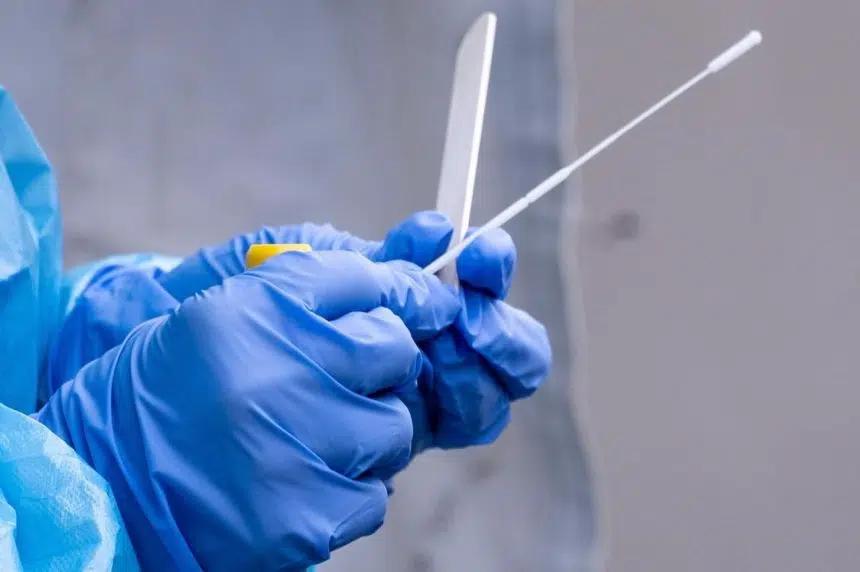Saskatchewan has received more than 370,000 COVID-19 rapid antigen tests from the federal government, but has so far used fewer than 7,000 of them.
A rapid antigen test differs from a PCR test, which must be sent to a lab for analysis.
Results for a PCR test can take anywhere from one to several days. The rapid antigen test — when used correctly — can have results in as little as 15 minutes.
Last fall, Health Canada approved the use of at least four rapid antigen tests and sent millions of them to the provinces.
During a news conference Tuesday, Saskatchewan’s chief medical health officer, Dr. Saqib Shahab, and Saskatchewan Health Authority CEO Scott Livingstone were asked why more rapid antigen tests weren’t being used.
“Certainly, we are working hard to deploy the tests we’ve received, but we’re doing that in a targeted way focusing on long-term care,” Livingstone stated.
Shahab added more details on testing platforms and how the rapid tests are being deployed will be presented at a later date, although no specifics were given on when that might occur.
“Our mainstay is in-lab PCR testing — that’s very successful,” he said. “Then, when required, that same specimen goes for genotyping. But there are point-of-care PCR tests that are deployed in Saskatchewan. There are point-of-care antigen tests that are being deployed in Saskatchewan. They give results in minutes to hours.”
Livingstone says work is being done with a specific team to deploy more of the tests at long-term care facilities.
“We’ve got 75 facilities that have been targeted for doing the tests. Twenty-three have already begun and 22 are in training,” he explained.
He added the rapid antigen testing would also be expanded into correctional facilities, but it’s not clear if or even when those tests might be used in other group settings, like schools.
“Although we haven’t worked through what the future holds with respect to schools or businesses, there certainly is an opportunity for us to use this type of test to do some more surveillance,” he said.
First, though, he cautioned more experts need to weigh in on where the best places would be to get the most “bang for your buck.”











